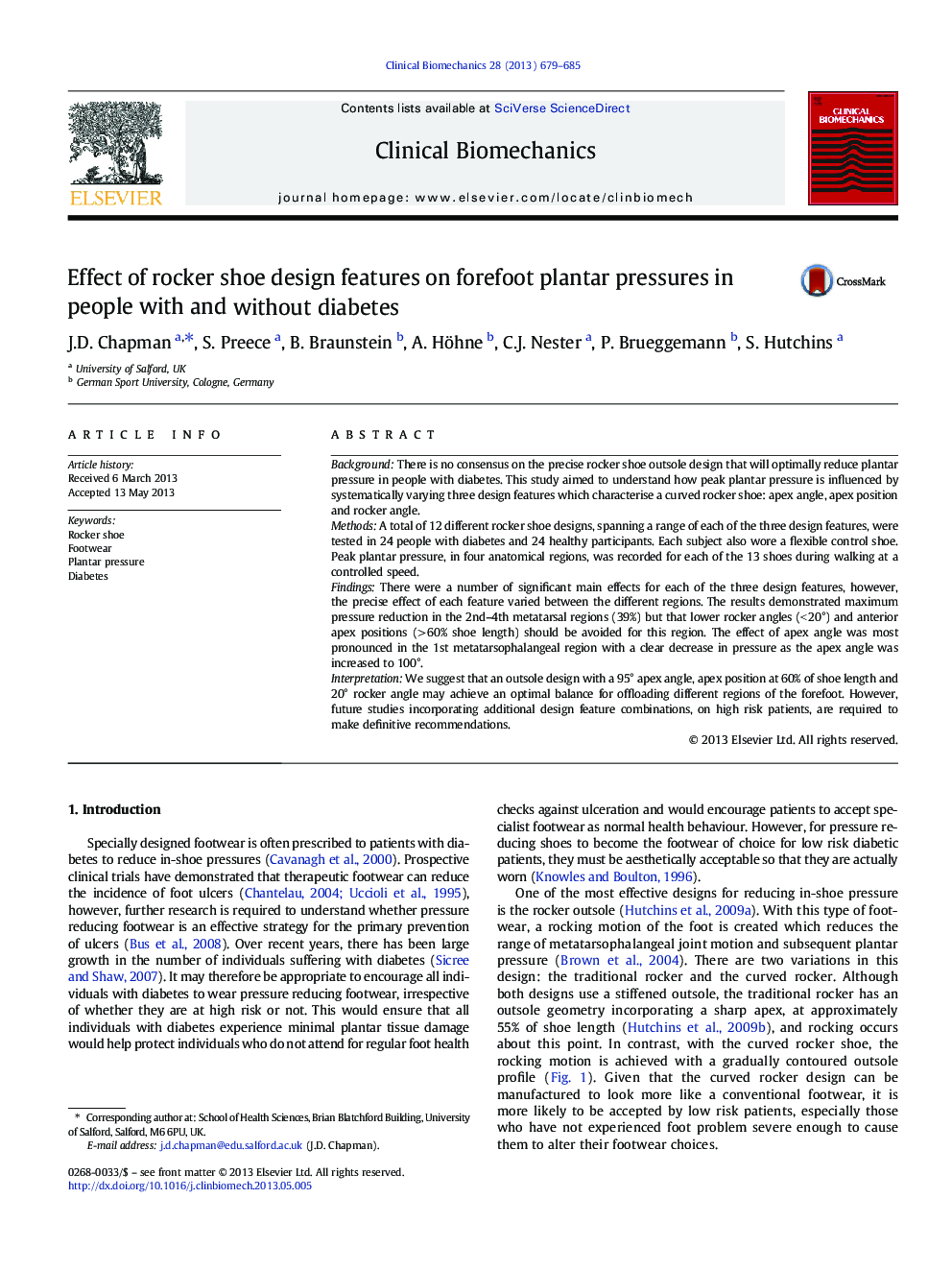| Article ID | Journal | Published Year | Pages | File Type |
|---|---|---|---|---|
| 4050663 | Clinical Biomechanics | 2013 | 7 Pages |
BackgroundThere is no consensus on the precise rocker shoe outsole design that will optimally reduce plantar pressure in people with diabetes. This study aimed to understand how peak plantar pressure is influenced by systematically varying three design features which characterise a curved rocker shoe: apex angle, apex position and rocker angle.MethodsA total of 12 different rocker shoe designs, spanning a range of each of the three design features, were tested in 24 people with diabetes and 24 healthy participants. Each subject also wore a flexible control shoe. Peak plantar pressure, in four anatomical regions, was recorded for each of the 13 shoes during walking at a controlled speed.FindingsThere were a number of significant main effects for each of the three design features, however, the precise effect of each feature varied between the different regions. The results demonstrated maximum pressure reduction in the 2nd–4th metatarsal regions (39%) but that lower rocker angles (< 20°) and anterior apex positions (> 60% shoe length) should be avoided for this region. The effect of apex angle was most pronounced in the 1st metatarsophalangeal region with a clear decrease in pressure as the apex angle was increased to 100°.InterpretationWe suggest that an outsole design with a 95° apex angle, apex position at 60% of shoe length and 20° rocker angle may achieve an optimal balance for offloading different regions of the forefoot. However, future studies incorporating additional design feature combinations, on high risk patients, are required to make definitive recommendations.
